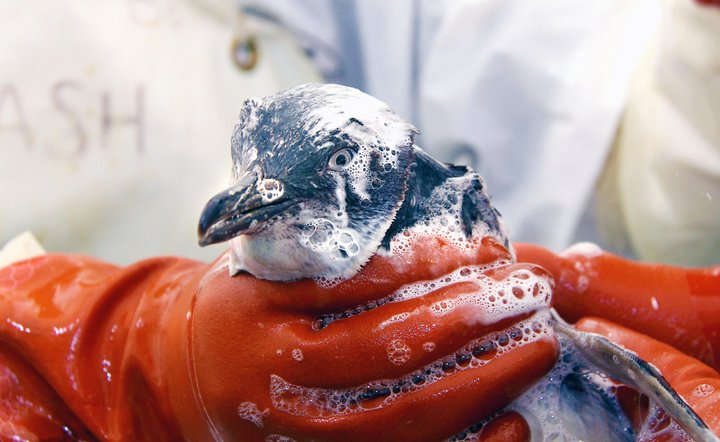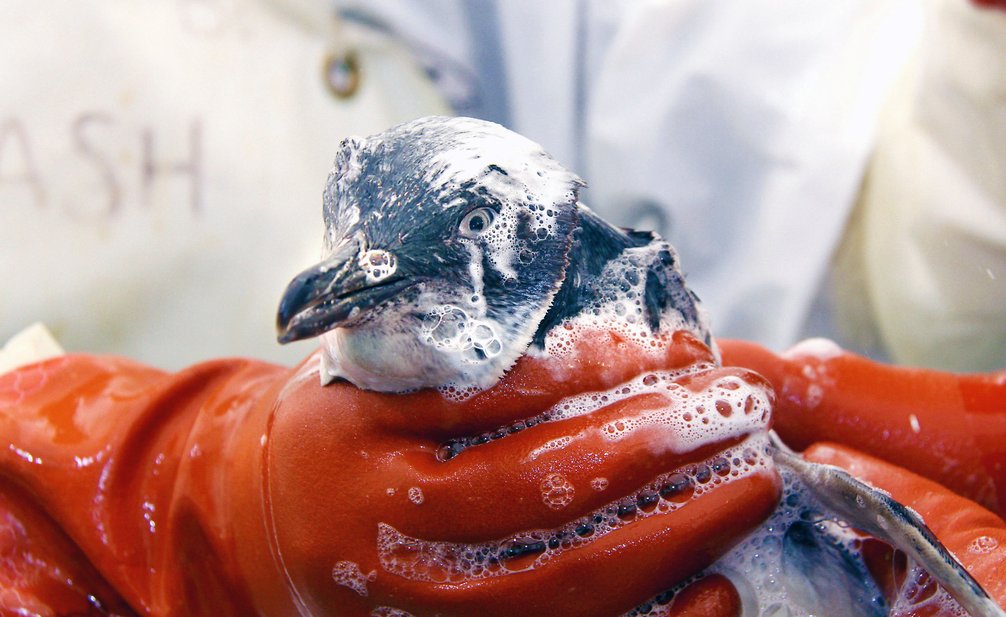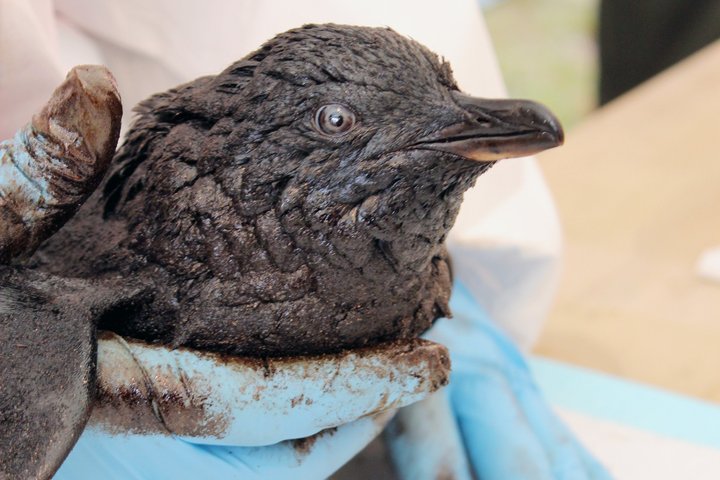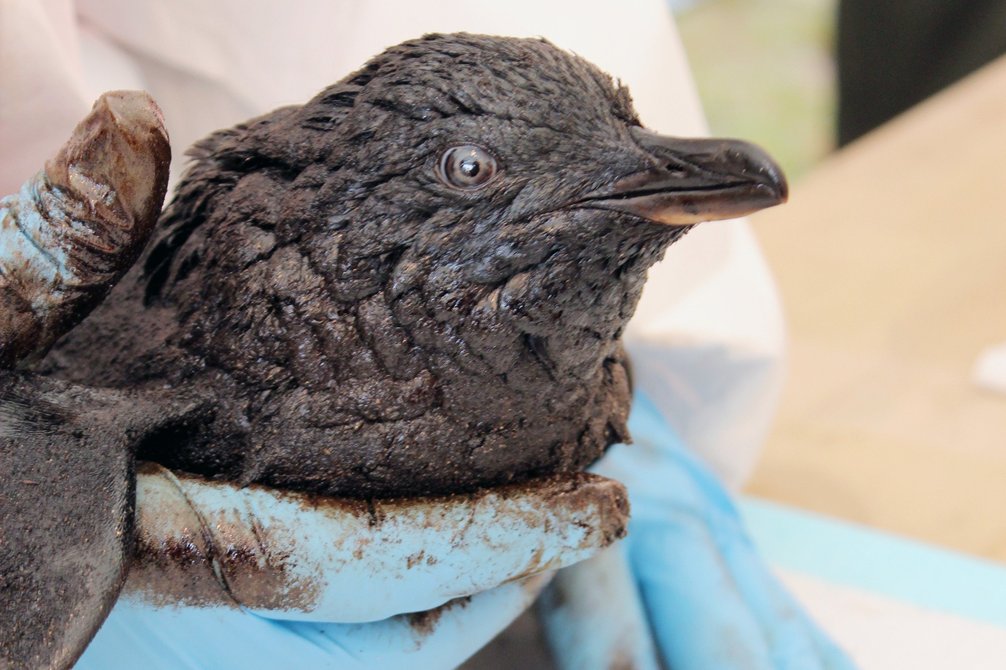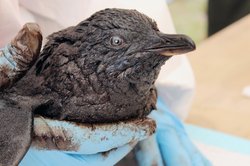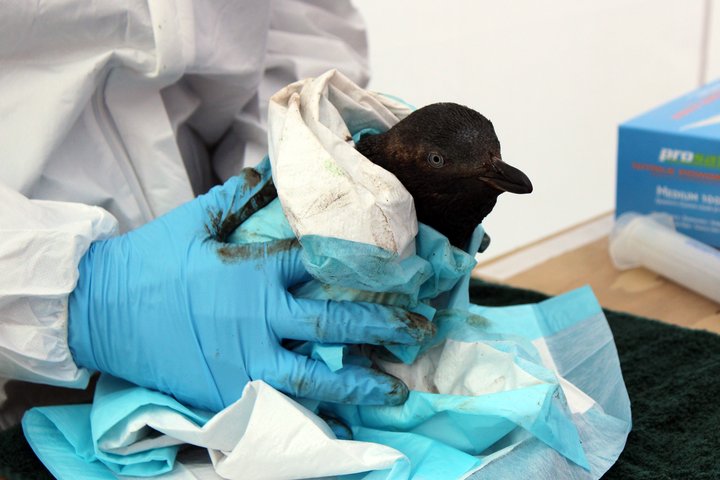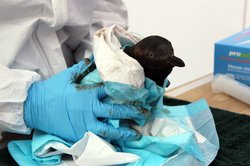Response coordination
National responders include regional council wildlife staff, wildlife rehabilitation experts and scientific advisors.
Wildbase's job is to avoid, mitigate or remedy any detrimental impacts on wildlife during an oil pollution event. During a response, Wildbase is subdivided into several response groups, including:
- reconnaissance
- hazing
- field / recovery
- field stabilisation
- primary rare hospital facility.
The success of oiled wildlife response efforts differs based on the number and species of animals and numerous other variables, including:
- the immediacy of the response effort
- care and husbandry requirements
- time of year
- type of contaminant affecting wildlife
- extent and duration of contamination
- weather conditions.
Phases of a successful oiled wildlife response
Phases of a successful oiled wildlife response
| Phase | Description and goals |
|---|---|
| Reconnaissance / pre-emptive responses | Field assessment / reconnaissance. Deterrence / hazing. Pre-emptive capture or relocation |
| Wildlife recovery | The capture of oil impacted wildlife. Transport of oiled wildlife to field stabilisation. Collection of dead oiled wildlife. |
| Field stabilisation | Thermoregulatory support and fluid therapy. Removal of gross contaminants. Address life threatening conditions. Euthanasia evaluations. |
| Transportation | Transport of oiled animals from field to rehabilitation facility. Transportation of dead oiled wildlife for identification, necropsy and disposal. |
| Rehabilitation | |
| Intake / triage | Medical examination and treatment / medical records started. Critical care concerns addressed. Evaluations. Wildlife given individual, temporary band. |
| Stabilisation | Fluid, nutritional and medical stabilisation of impacted animals. 48 to 72-hour period. Prepare animals for cleaning process. |
| Cleaning / drying | Removal of all oil/contaminants from impacted wildlife. Removal of the cleaning agent by rinsing. Drying cleaned and rinsed animal. |
| Conditioning | Restoring waterproofing and physical health (days to weeks). |
| Release | Permanent marking/banding of individual animals. Release of cleaned, waterproof animals into a clean environment. Post release monitoring. |
Major New Zealand oil responses
MV Rena – 2011
MV Rena – 2011
The MV Rena grounding has become known as New Zealand’s worst maritime environmental disaster.
Early in the morning of 5 October 2011, the cargo vessel Rena struck Astrolabe Reef, 12 nautical miles off the coast of Tauranga, and grounded. The Rena was carrying 1,368 containers and 1,733 tonnes of heavy fuel oil. A significant amount of oil (350 tonnes) leaked over the next seven days.
The response
An incident response was immediately instigated by Maritime New Zealand, and members of the National Oiled Wildlife Response Team (NOWRT) were onsite from day one of the response.
Oil spill response personnel and volunteers, including large numbers of locals, worked to clean oiled beaches and recover debris from the containers.
Helping oiled wildlife
Wildlife experts from the National Oiled Wildlife Response Team treated oiled birds, including little blue penguins and pied shags, and pre-emptively caught 60 rare New Zealand dotterels to prevent them becoming oiled. These birds were later re-released back into cleaned environments in a staged released programme.
At the height of the wildlife response, approximately 250 people were involved in daily wildlife operations, including field staff scouring the coastline to collect oiled birds, the oiled wildlife facility staff who cared for the birds after capture, and the numerous support staff required to help with the management, logistics, planning, and human resourcing.
Rena response timeline
2011
5 October
- CV Rena runs aground on Astrolabe Reef, Tauranga.
- National Oiled Wildlife Response Team and Equipment mobilised.
- Work to establish an oiled wildlife facility at Te Maunga begins.
6 October
First dead oiled birds observed at sea.
7 October
- Oiled wildlife field response begins.
- First live oiled little blue penguin admitted to oiled wildlife treatment facility.
8 October
First major release of oil occurs from the Rena.
10 October
Significant oiling begins to impact Tauranga coastline.
12 October
First New Zealand dotterels caught as part of a pre-emptive capture programme.
17 November
The height of the wildlife response is reached with 407 oil-affected birds in care.
22 November
- The first public release of 49 penguins takes place at Leisure Island.
- Karin Sievwright's post-release monitoring study on little blue penguins begins to monitor survival and reproduction of rehabilitated and released wildlife.
23 December
Te Maunga oiled wildlife facility is demobilised and remaining 16 birds in care transferred to Massey University, Palmerston North.
2012
8 January
The Rena splits into two sections during heavy seas.
17 February
The last major release of oil-affected wildlife occurs by boat near Motiti Island.
2013
December
- Karin Sievwright's post-release monitoring study finishes, and analysis and write-up begins .
- Publication of 'Captive husbandry and veterinary care of northern New Zealand dotterels MV Rena'.
Read Karin Sievwright's study on ResearchGate
2014
December
Field work begins to research the diving behaviour and stress response of little blue penguins rehabilitated and released during the MV Rena wreck.
2019
Post-Rena monitoring research is published. Topics include:
- survival and breeding of little blue penguins
- avian mortality from the MV Rena
- diving behaviour of little blue penguins post-MV Rena
- stress response of rehabilitated little blue penguins
- avian captive husbandry and vet care.
See the published research section on this page for publications.
Tai Ping – 2002
Tai Ping – 2002
Tai Ping, a Hong Kong-flagged bulk carrier with a crew of 23 and 9,500 tonnes of urea fertiliser aboard, ran aground at Tiwai Point near the entrance to Bluff Harbour on the morning of 8 October 2002.
The Maritime Safety Authority (MSA) declared a Tier 3 emergency response following the grounding of the vessel, on the basis of the large volumes of fuel oil carried on board and the risk of a potential spill.
Wildbase were activated and an oiled wildlife holding facility was also set up just in case it was required. After being grounded for nine days, the vessel was refloated safely and not a drop of oil was spilled.
Jody F Millennium – 2002
Jody F Millennium – 2002
The Jody F Millennium ran aground in Gisborne on Wednesday 6 February 2002 after breaking free from her moorings.
Huge swells and high winds forced the ship to remain at sea, eventually grounding her on a beach. This led to 25 tonnes of fuel oil spilling and affecting an area of about 8km of coastline from Tuahine Point to Gisborne Airport.
Wildlife response was notified and stood up, but no oiled wildlife facility had to be developed.
